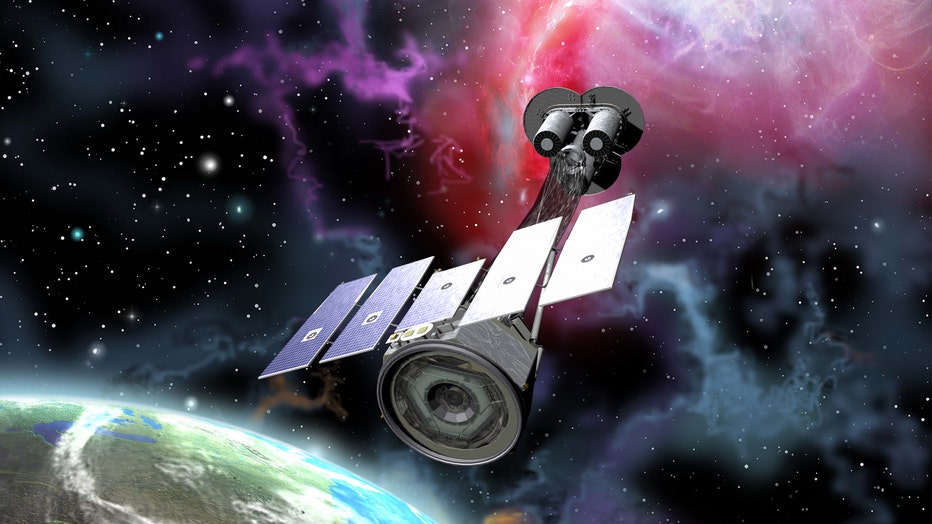NASA, SpaceX launch IXPE spacecraft to observe black holes, neutron stars
NASA, SpaceX to launch spacecraft to observe black holes, neutron stars
A SpaceX Falcon 9 rocket carried NASA’s Imaging X-ray Polarimetry Explorer (IXPE) spacecraft into orbit early Thursday morning.
LAKE MARY, Fla. - A SpaceX Falcon 9 rocket carried NASA’s Imaging X-ray Polarimetry Explorer (IXPE) spacecraft into orbit early Thursday morning.
The rocket lifted off from Launch Complex 39A at NASA’s Kennedy Space Center in Florida at 1 a.m. ET.
This astrophysics mission will allow astronomers to discover, for the first time, the hidden details of some of the most exotic astronomical objects in our universe.
The IXPE mission will measure polarized X-rays from exotic cosmic objects, such as black holes and neutron stars, to better understand these types of phenomena and extreme environments.

Artist rendering of NASA's Polarimetry Explorer (IXPE) spacecraft. [Image courtesy: NASA]
The mission will fly three space telescopes with sensitive detectors capable of measuring the polarization of cosmic X-rays, allowing scientists to answer fundamental questions about these extremely complex environments where gravitational, electric, and magnetic fields are at their limits.
RELATED: Starlink satellites tracker: How to see the parade in the night sky
IXPE is a collaboration between NASA and the Italian Space Agency, led by principal investigator Martin Weisskopf at NASA’s Marshall Space Flight Center in Huntsville, Alabama. Ball Aerospace, headquartered in Broomfield, Colorado, manages spacecraft operations with support from the University of Colorado at Boulder. NASA’s Goddard Space Flight Center in Greenbelt, Maryland, manages the Explorers Program for the agency’s Science Mission Directorate in Washington.
This will be the fifth flight for this Falcon 9’s first stage booster, which previously supported launch of Crew-1, Crew-2, SXM-8, and CRS-23.
Following stage separation, Falcon 9’s first stage will land on the Just Read the Instructions droneship, which will be located in the Atlantic Ocean.
Watch FOX 35 Orlando for the latest Central Florida news.

